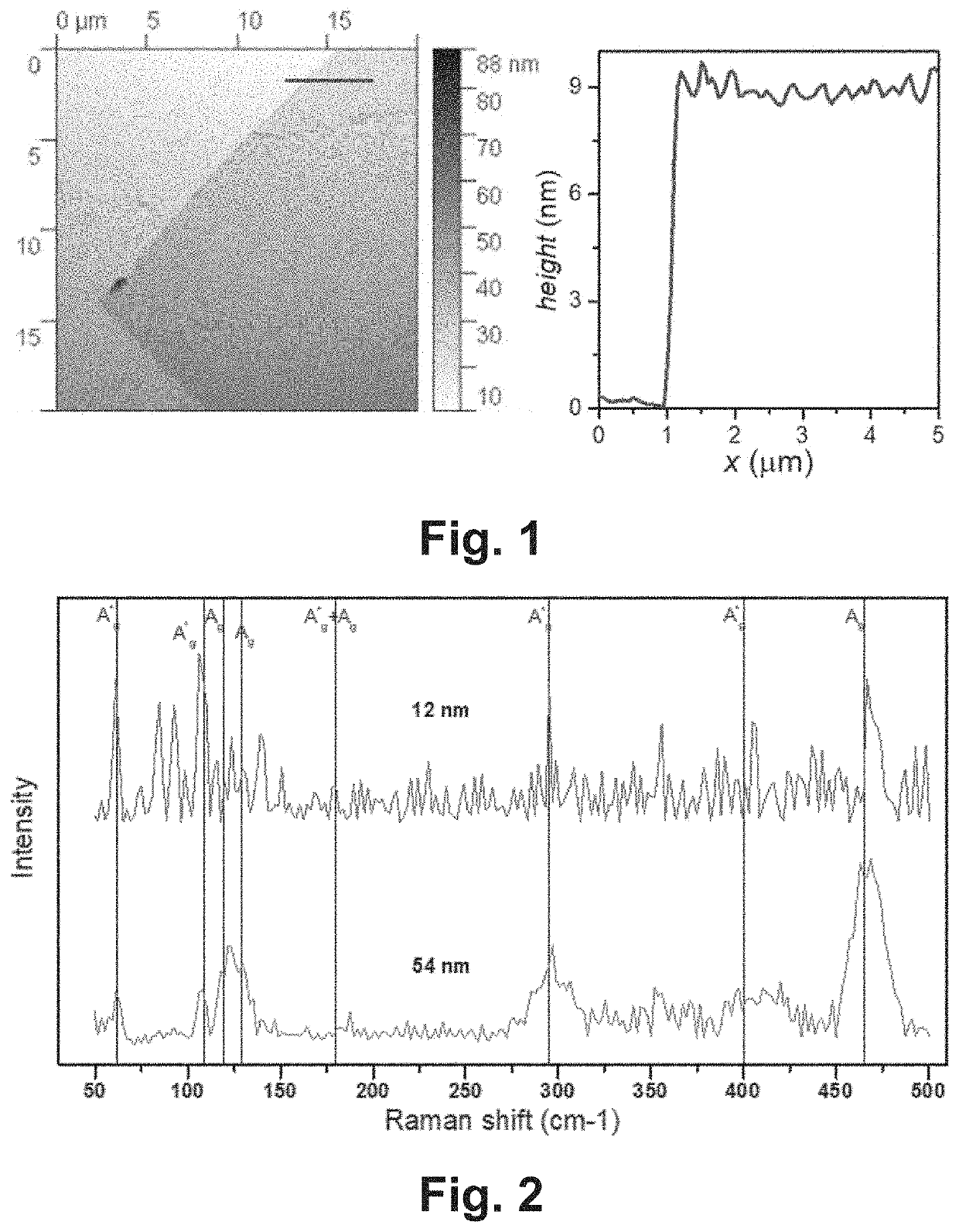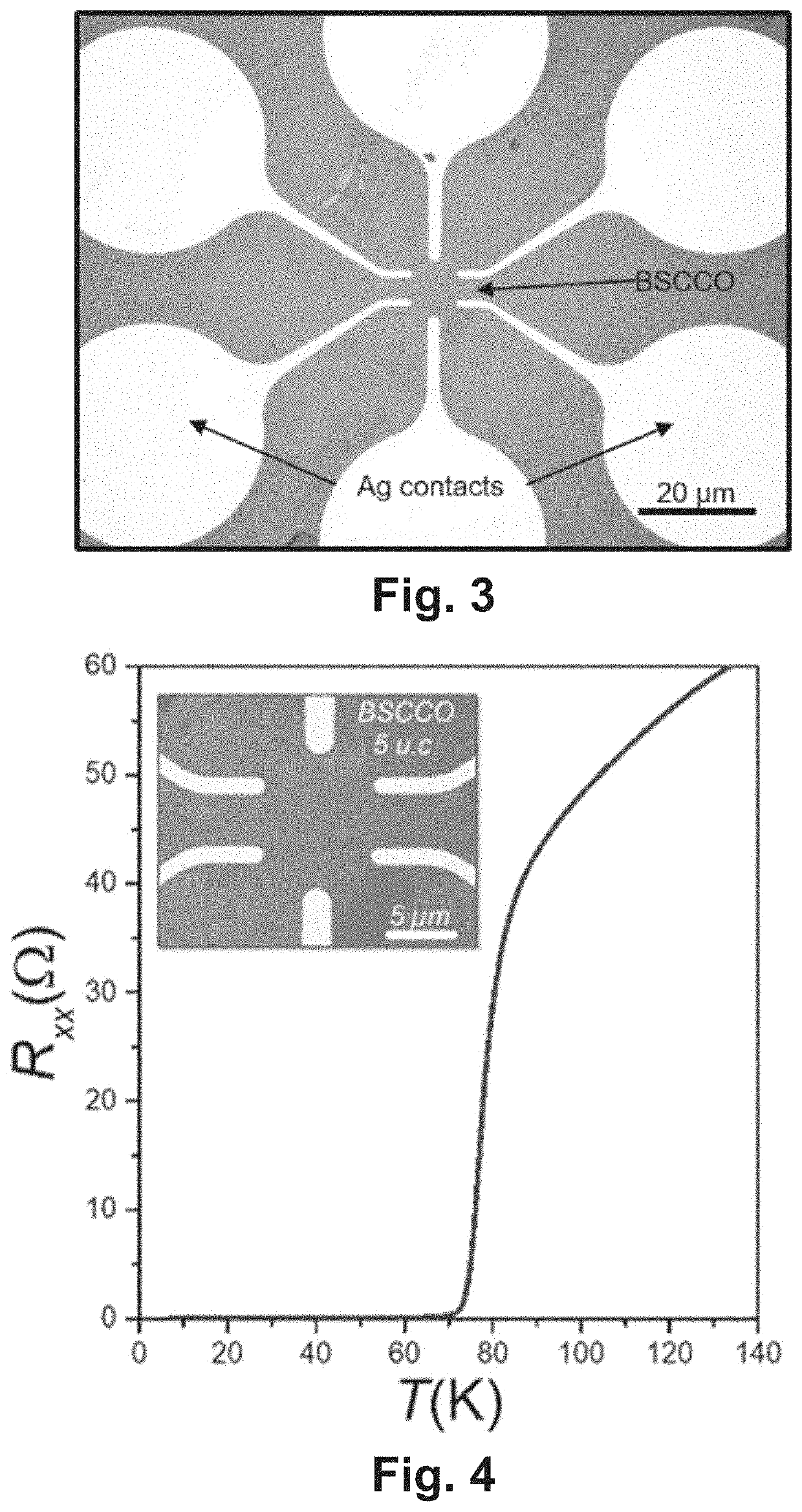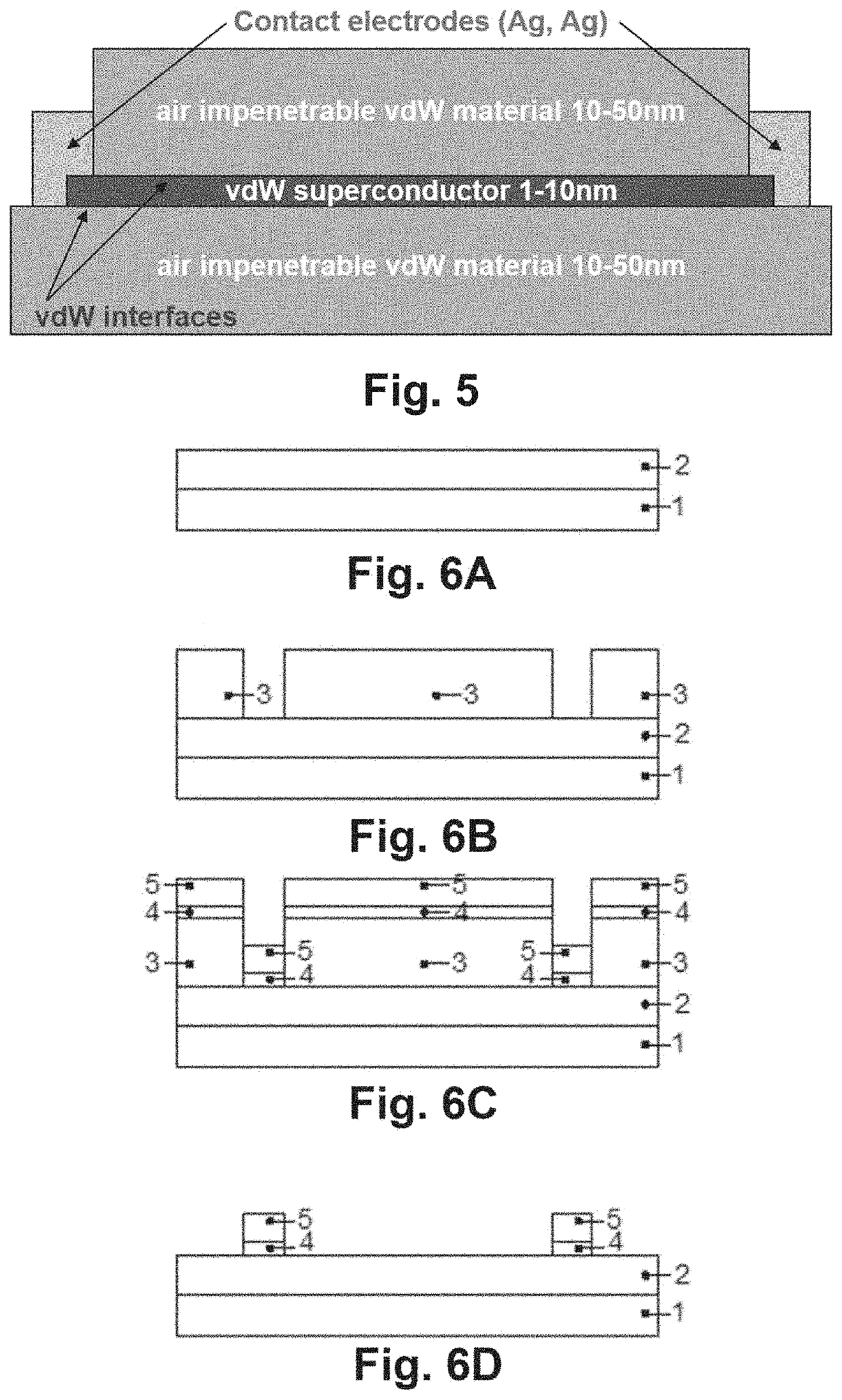Superconducting nanowire single-photon detector, and a method for obtaining such detector
a single-photon detector and superconducting nanowire technology, applied in the direction of superconductor devices, optical radiation measurement, instruments, etc., can solve the problems of limited academic research application, inability to operate the detector inside a large cryogenic refrigerator, and high cost of packaging snspds, etc., to achieve long wavelength light, reduce heat capacity, and reduce the effect of cos
- Summary
- Abstract
- Description
- Claims
- Application Information
AI Technical Summary
Benefits of technology
Problems solved by technology
Method used
Image
Examples
Embodiment Construction
lass="d_n">[0072]In the present section some working embodiments of the detector and method of the present invention will be described in detail.
[0073]Particularly, a SNSPD with a very thin film thickness has been built by the present inventors in order to allow a reasonable detector performance, using the high-Tc cuprate superconductor Bismuth Strontium Calcium Copper Oxide (BSCCO). BSCCO belongs to the entirely novel class of strictly two-dimensional (2D) van der Waals (vdW) materials, which only recently have emerged. In contrast to other high-Tc superconductors BSCCO can be mechanically prepared with a film thickness of 1.5 nm corresponding to only half a crystallographic unit cell. In addition, being ‘cousins’ of the wonder material graphene, these ultra-clean single-crystals have far superior material quality than the strongly disordered superconductor thin films of NbN or WSi which are used for state-of-the-art SNSPDs. Having a >10 times reduced thickness, 2D superconductors ...
PUM
 Login to View More
Login to View More Abstract
Description
Claims
Application Information
 Login to View More
Login to View More - R&D
- Intellectual Property
- Life Sciences
- Materials
- Tech Scout
- Unparalleled Data Quality
- Higher Quality Content
- 60% Fewer Hallucinations
Browse by: Latest US Patents, China's latest patents, Technical Efficacy Thesaurus, Application Domain, Technology Topic, Popular Technical Reports.
© 2025 PatSnap. All rights reserved.Legal|Privacy policy|Modern Slavery Act Transparency Statement|Sitemap|About US| Contact US: help@patsnap.com



